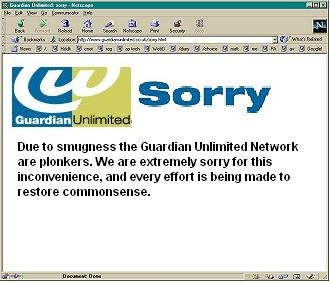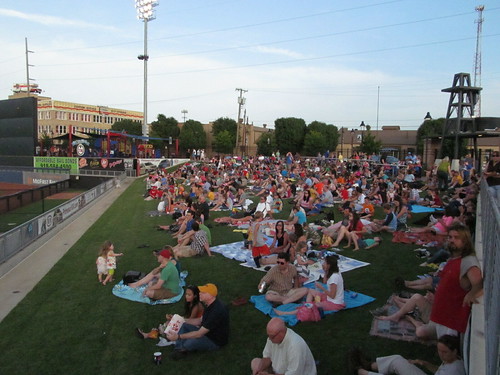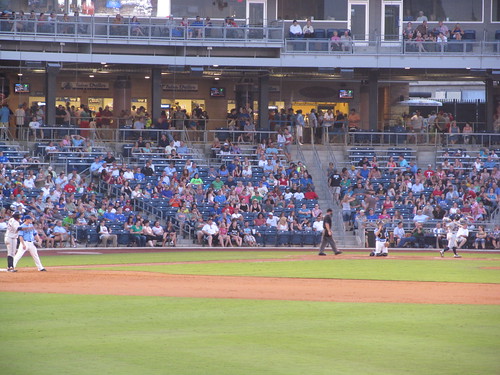August 2017 Archives
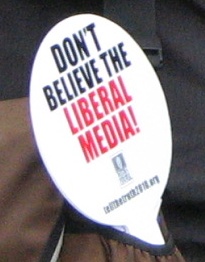 If you're wondering why people believe the mainstream news media is more interested in pushing a narrative rather than reporting the facts, I've got a story for you. If you want to know why you shouldn't trust a mainstream news outlet to give you multiple reasoned perspectives on a complex public-policy issue, read on.
If you're wondering why people believe the mainstream news media is more interested in pushing a narrative rather than reporting the facts, I've got a story for you. If you want to know why you shouldn't trust a mainstream news outlet to give you multiple reasoned perspectives on a complex public-policy issue, read on.
On Tuesday, August 29, 2017, I was quoted in a story about Oklahoma's recent budget problems which ran on the website of the Guardian, Britain's leading leftist newspaper.
The author, Russell Cobb, a native of Oklahoma and now a professor of modern languages and cultural studies in Canada, had been commissioned to write the piece a few months ago and reached out to me via email in late June for my thoughts on the issue. The article is part of a series funded by The Rockefeller Foundation. Cobb is writing a book with the working title, You Dumb Okie: Race, Class, and Lies in Flyover Country. (Had I known about this, I may not have been inclined to help him out.)
(I do find it amusing that my most recent appearances to talk about politics on the radio and in the press were both for overseas media outlets -- the Australian Broadcasting Corporation and the Guardian, respectively -- and both of them left-of-center, to boot. It reminds me of Tony Hancock's line in the episode "The Radio Ham": "It's opened up completely new horizons for me. Look at this! Friends from all over the world! None in this country, but all over the world." I was on KVWO 94.7 -- the Voice of Welch, Oklahoma -- to talk about Bob Wills on his 112th birthday back in March.)
When Cobb first contacted me, he wrote that he had "many left-of-center voices in the piece blaming tax cuts and the oil and gas industry" and that he "really need[ed] smart conservative voices" for his article. He asked if I'd be willing to talk to him and if there was anyone else he should contact. Here's my reply:
A couple of other sources worth your time:The Oklahoma Council of Public Affairs (ocpathink.org) is an excellent source for the other side of the budget story. For years, they have been proposing solutions to reduce educational administrative bloat, cut unneeded programs in other areas of state government, and focus educational spending on the classroom. For the most part, legislative leaders, fearful of still-powerful lobbyists representing school boards, school administrators, and public employee unions, have failed to act on these ideas. Jonathan Small (OCPA president), Brandon Dutcher, and Trent England would all have some informative things to say on the topic and could point you to specific studies they've done.
State Rep. Jason Murphey is one of the smartest people in state government. His background is in information technology, and he's devoted much of his legislative career to consolidating and streamlining state government's computer systems to help state employees better serve the public. He has a blog at hd31.org, where he has analyzed the budget crisis and this most recent legislative session.
Some topics to explore, off the top of my head:
- Skyrocketing growth in non-classroom personnel
- Large number of small school districts
- Duplication in higher education, too many colleges, too many campuses, too many independent administrations (where ex-politicians find a second career as college presidents), too much overlap between the offerings of universities, community colleges, and vocational-technical schools. We need a College Realignment and Closure Commission -- the sort of process used successfully at the Federal level to close unneeded military bases.
- Tendency of left-wing voices to focus solely on state appropriations and to ignore other significant sources of revenue, such as local property tax, in the complete picture of how Oklahomans fund education. Fixed property tax levies fund operations of K-12 schools, community colleges (e.g. TCC, Rose State), and vocational-technical schools (e.g. Tulsa Technology Center). Additional property tax is levied to repay construction bonds for school facilities.
- Revenue sources that are earmarked by the State Constitution or by statute, which means certain agencies of government are overfunded, but those excess funds cannot be reallocated to agencies in need.
- Internal strife in the Republican legislative caucuses and the influence of the state, Oklahoma City, and Tulsa Chambers of Commerce.
Shoot me some questions if any of these facets interest you.
Cobb wrote back: "Thank you so much. I'll be in touch soon with more specific questions. This is very helpful."
A couple of days later, I heard from Cobb again, saying he'd read "quite a bit of the references" I had sent him and indicated it was helping him to understand the arguments over issues like the gross production tax, which, he gathered from what he'd read, would not fix Oklahoma's budget mess. Then he posed a specific question:
"I'm interested in your take on a provocative thesis someone ran by me: Oklahoma, with its rising social inequalities, reliance on incarceration as a way of dealing with mental health issues, its continuing crisis in dealing with Medicaid and disabilities, plus the education crisis, was becoming a failing state in political science terms. What's your reaction to that thesis?"
Here's what I wrote in reply:
"Failing state" is a hysterical and overwrought label to apply to the State of Oklahoma's current funding dilemmas. This is not Somalia or Venezuela. As you drive through our state, you will not be caught in the crossfire between the armies of rival warlords. A barge hauling wheat from the Port of Catoosa to the Gulf of Mexico is not going to be boarded by pirates as it passes Muskogee. State government employees continue to do their jobs as before. New roads are being built, old roads are being repaired. Tulsa Community College has enough tax money to fund full scholarships for local students with at least a mediocre high school academic record. How bad off can we be if Oklahoma can still afford to give a "Quality Jobs" tax credit to billionaire NBA owners?If you want to find a fiscally failing state, look to Illinois: Two years (and likely a third) without a budget, massive unfunded liabilities, unable to pay its current bills -- the result of decades of the Blue State model of high taxes, high levels of regulation, and purchasing the loyalty of public-employee unions with more jobs and bigger pensions that will never be fully funded. Connecticut and New Jersey face similar crises, and they serve as examples that raising taxes only digs a deeper hole: Government grows to spend the extra revenue; the promised spending cuts never materialize; higher taxes stunt economic growth.
Oklahoma's current dilemma proves that, whether union-label Democrats or crony-capitalist Republicans run the government, public choice theory holds true: In politics, concentrated benefit trumps diffuse cost. Barring a grassroots miracle, a state's governor and legislative leaders will be those politicians most easily swayed by the special interests who come to the State Capitol bearing gifts in exchange for government-given financial advantage, be they public-employee unions looking for a raise, superintendents of tiny school districts hoping to dodge consolidation, or oil barons and wind tycoons looking for targeted tax credits. Pliable legislators get contributions for themselves and their PACs, with which they win the loyalty of their colleagues in the caucus room.
With this sort of leadership, if it can be called leadership, state spending will rise to match rising revenues, because the Ado Annies on Capitol Hill just cain't say no. Concentrated benefit trumps diffuse cost. The profligate spending only makes the cuts all the more painful when revenues fall, as they always do. Oklahoma would be in much deeper trouble were it not for the constitutionally mandated "rainy-day fund" that sequesters some of the financial windfall in good years.
Oklahoma needs a new governor and new legislative leaders willing to eliminate the revenue earmarks that keep taxpayer dollars from flowing where they're most needed, to eliminate duplication in our colleges and career technology centers, to eliminate tax credits that do nothing for economic growth, to eliminate administrative bloat and the regulations that create it. Every one of those necessary steps will threaten some group's concentrated benefit. Persisting with necessary reform in the face of the resulting resistance will require principled courage, a quality scarce amongst the crony-capitalists currently running the state or the big-government tax-hikers who want to replace them.
Happy to answer more questions if you've got them.
Cobb wrote back later that day, thanking me: "This is very compelling." He asked me for a short self-description, which I supplied, thanking him for reaching out.
On Tuesday, Cobb emailed to tell me that the story was up. "Thanks for your time and effort in helping me tell this story. Even if you don't agree with it's conclusions I hope it leads to a productive conversation."
Here's the part of the story that mentions me:
Of course, many would not recognize their state in this description. One of the most respected bloggers in Tulsa, Michael Bates, said the whole idea of Oklahoma as a failing state was "hysterical and overwrought".After all, downtown Tulsa and Oklahoma City are thriving. The cities have been rated by Kiplinger among the "best cities in America to start a business". Tulsa has rolling hills, parks and delicious barbecue: Tulsa People enumerates the city's private schools. Affordable housing prices are the envy of the nation and suburban school districts boast gleaming new facilities. And yes, some conservatives think the four-day week is good for "traditional" families, allowing for more time with the kids. For affluent families, the extra day can be spent on college prep or sports. But for middle- and working- class parents, it means lost wages or added expenses for childcare.
You'll notice that, while my description of the "failing state" label was included, my reasons for that description (which I thought were vividly and cogently expressed and which Cobb described as "very compelling") were excluded in favor of facile, unattributed comments which have no connection to anything I wrote. The introductory phrase of the second paragraph, "After all," could easily lead a reader to assume that it was a continuation and elaboration of my assessment in the previous paragraph.
Beyond these two paragraphs, the story fails to give any ink to what other conservative critics have written about the state's fiscal problems.
I feel like I was stabbed in the back. I believed that Cobb's request for my perspective was in good faith, and I answered in good faith. Not only was my detailed reply whittled down to one short phrase, the phrase was embedded in a context that does not reflect my thinking and may give readers the impression that I am unreflective and uncaring about Oklahoma's budget problems.
Tuesday afternoon, I emailed Russell Cobb and asked him about the way my quote was framed and about the absence in his story of the "smart conservative voices" he said he needed. I had been waiting for his reply before publishing this, but as it's been over 48 hours and I haven't heard from him, I've decided to go ahead and publish this story. I have to assume that it was his editorial decision and not the Guardian's. I will be filing a request for clarification with the Guardian's ombudsman and will let you know if they respond.
MORE:
A Tumblr account called Grauniad Highlights tracks the odd topics that the newspaper chooses to pursue.

The Guardian was tagged with the mocking anagram Grauniad by Private Eye, the satirical British news magazine, because of the paper's frequent spelling mistakes and typographical errors. I rather like the name. It sounds like the name of a failed attempt at epic poetry by one of ancient Greece's lesser poetasters.
Tulsa native and newsman Loren Cosby shared with me a couple of interesting anecdotes involving Jerry Lewis's appearance at a Tulsa golf tournament, and he gave me permission to share them with you.
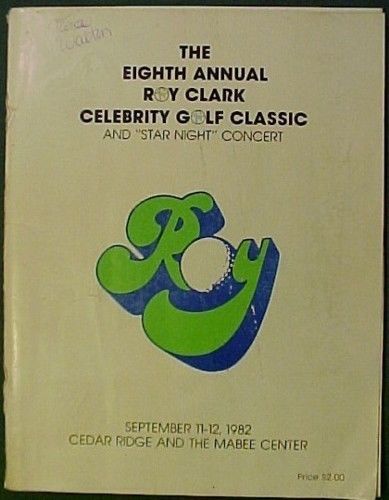
The Roy Clark Celebrity Golf Classic had a nine-year run at Cedar Ridge Country Club from 1975 to 1983, raising money for Children's Medical Center through ticket sales to the golf tournament, amateur golfers paying for the right to play alongside the stars, and ticket sales to the variety show at the Mabee Center. This Daily Oklahoman story describes what turned out to be the final edition of the tournament:
More than 60 celebrities from the world of entertainment and sports will be participating in the 9th Annual Roy Clark Celebrity Golf Classic, next Saturday and Sunday, Sept. 17 and 18, in Tulsa.In addition to hosting the golf tournament, Clark will headline the annual StarNight Show Saturday evening at Oral Roberts University Mabee Center. Other headliners for StarNight will include the Gatlin Brothers, the Osmond Brothers and Kay Starr. The comedy team of Williams and Ree will round out the program with George Lindsey as emcee. Tickets are on sale at Carson Attraction outlets including the John A. Brown stores....
Golf celebrities include actor Claude Akins, cowboy star Rex Allen, Hollywood columnist James Bacon, actor Ernest Borgnine, singer Jimmy Dean, actor Ron Ely, former astronaut Capt. Ron Evans, TV soap series actor Tom Hallick, Emmy award winner Arte Johnson, singer Trini Lopez, actor Fred MacMurray, former baseball outfielder Roger Maris, actors Tim Matheson, Donald May, Doug McClure, Darren McGavin and Martin Milner to name a few.
The late '70s and early '80s might be called Tulsa's Silver Age, at least in terms of prominence and prosperity. Oil money was flowing, and new buildings were going up downtown. Tulsa musicians like Leon Russell and David Gates were at the top of the pop charts, and the local music scene was drawing the likes of Eric Clapton and George Harrison to town. Unique, locally produced programming dominated the airwaves: KTUL's Oil in Oklahoma, the John Chick Show, Mazeppa Pompazoidi's Uncanny Film Festival, Uncle Zeb's Cartoon Camp, and meteorologists who used a cartoon character (Don Woods and Gusty on KTUL) or a lion puppet (Lee Woodward and King Lionel on KOTV) to tell us about the weather. Tulsa radio had local news and sports talk shows; network programming like the Larry King Show was relegated to the graveyard shift.
And it was during this period that Roy Clark, with the encouragement of his agent, impresario Jim Halsey ("Tulsa's Titan of Country Talent" according to a 1979 Chicago Tribune feature story), made Tulsa his home base and began to get involved in the community, drawing his celebrity friends to come to Tulsa and help.
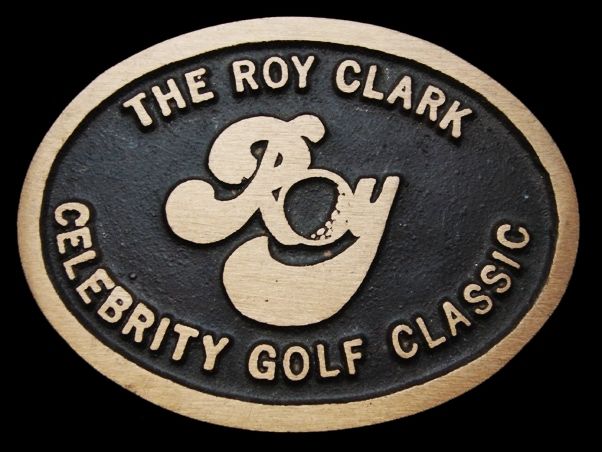
Loren Cosby, then in his pre-teen and teenage years, attended many of the tournaments. His mother, a member of the Children's Medical Center Auxiliary, served as a driver for tournament celebrities. Cosby remembers Jerry Lewis's lone appearance at the Roy Clark tournament. His memory places it in the late '70s, around the time Lewis was collaborating with Oral Roberts on his prime time TV specials.
I worked cleaning golf clubs. Picture this: I'm standing on grass near the clubhouse garage near the arrival driveway. First tee is about 1/4 football field from the driveway. Mom and others drove celebs in Dean Bailey Oldsmobile Skylarks between the hotel and the course. Except Jerry Lewis.I hear multiple sirens around 8 a.m. Four Tulsa Police Department motorcycle cops and two TPD cars, sirens blaring, deliver Jerry Lewis to the driveway in his limo. Lewis gets out -- the sidewalk is roped off. Lewis struts down the sidewalk, ignoring a group of about thirty Children's Medical Center kids, talks with either John Erling or Lee Woodward.
Shortly thereafter, an even bigger star of stage and screen makes a more modest entrance.
Twenty minutes later -- my view of the driveway obscured by a low tree branch -- reveals a Skylark pulling up quietly. A door swings open, a guy putting on golf shoes, nobody paying attention but me. It's Bob Hope. No pomp. Channel 8's Rea Blakey walks toward him with cue card for a public service announcement for Tulsa Red Cross. People still don't realize Hope is there as the Jerry Lewis carnival was just winding down. Mom said it was the first and last time they invited Lewis because he was a jerk.
Cosby recalls, "The only year Jerry was there, he did the typewriter bit in the Star Night Show at the Mabee Center, then Hope did his act and as always Roy closed it and played Malagueña."
But about 20 years later, Lewis himself had mellowed somewhat, at least according to a story that Cosby heard from some family friends who encountered Lewis in New York City, after a performance of Damn Yankees on Broadway:
After the show, they ran into Jerry Lewis, who was leaving the theater from a side alley entrance by himself. They said they enjoyed the show. He spent 25 minutes asking them questions about the show, real nice, said he loved Tulsa and Oral Roberts was a friend.
Cosby says he could have written a book about being a kid hanging around at the Roy Clark celebrity tournaments.
Dinner with just me and Evel Knievel at the Williams Plaza Hotel. Getting together with June Haver and Fred MacMurray every year they were here. Eating at MacMurray's table during the sponsor/celebrity dinner. Walking from MacMurray's room to Bob Hope's room in Gerald Ford's presidential suite at the Sheraton Skyline East. Danny Thomas in a suit at 6:30am bringing boxes of donuts to volunteers at Williams Plaza. Riding on the back of Alan Hale's golf cart. Hanging out with Martin Milner at Star Night and getting scolded in a fatherly way by him for acting like Jerry Lewis without the credentials! Talking with Frank Cady and Charles Lane. While interning with KRMG, asking James MacArthur a question about his mom out on the golf course and getting yelled at by him: "Is this interview about me or Helen Hayes?" I was all of 15. Walking Cedar Ridge with Alvy Moore. Also walking Cedar Ridge with my mom and Roger Maris. Clint Howard borrowed Mom's car one evening while a bunch of volunteers were in the Sheraton bar/restaurant with Claude Akins and others. James Garner was in the program almost every year, and I was always disappointed when he never showed. It goes on and on.
MORE: Tulsa TV Memories is the pre-eminent online resource documenting Tulsa's golden '70s and early '80s, both on and off the air, through the memories of on-air personalities, behind-the-scenes crew, and ordinary listeners and viewers. I found a few reminiscences about Jerry Lewis's appearances in Tulsa. Lowell Burch remembered his time as a student at ORU: "The TV equipment was as good as any they had in Burbank at the time and the celebrities occupied the campus like a Hollywood backlot. Stars like Johnny Cash, Pearl Bailey, Jerry Lewis, and Doc Severinson (just to name a few) would show up on campus on a regular basis to do Oral's shows." Mike Bruchas relayed a friend's story of Jerry Lewis showing up in a limo at Sound Unlimited in search of an adapter for his boombox, and the anecdote is accompanied by an ad for an Oral Roberts Christmas Special starring Jerry Lewis and characters from Sid and Marty Krofft's Saturday morning TV shows. Lewis was a visiting lecturer at ORU in the late '70s. DolfanBob remembers going to one of the Roy Clark tournament Star Nights and seeing "Jerry Lewis, Ben Johnson, and Adrienne Barbeau, who did a Belly Dance." (Important use of the Oxford comma there.)
If you encountered Jerry Lewis in Tulsa or had brushes with greatness at the Roy Clark Celebrity Golf Classic, drop me a line at blog at batesline dot com. I'd love to share your stories here.
STILL MORE:
Jerry Lewis's typewriter bit from Who's Minding the Store:
Roy Clark plays Malagueña on an episode of The Odd Couple:
This Friday, August 25, 2017, there will be a western swing dance benefitting a small-town, non-profit radio station, KVWO 94.7, the Voice of Welch, Oklahoma.
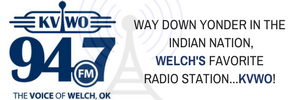
KVWO's "Dance 'Til Your Stockings Are Hot and Unraveling" fundraiser will be held in the Welch Civic Auditorium, running from 7:30 pm to 10:30 pm. Dewayne Bowman & the Swingin' West Band and the A-Bar Bunkhouse Band will headline the event -- both bands are donating their performances for the cause. Advance online tickets are $10 for adults and teens, $7.50 for kids 12 and under; tickets at the door are $12 for adults and teens, $9 for kids 12 and under. Doors open at 7.

The goal is to raise $10,000 to build a transmitter tower for the station. Since going on the air last year, the station has shared a tower, using a digital wireless connection to send audio from the studios to the transmitter.
Our own tower means that we can maximize our licensed height and power allowances. Having our own tower should also allow us to become independednt of the internet to put our signal on the air. That means as little downtime as is possible, especially in times of severe weather.Additionally, our own tower means we'll be able to triple our current power output. Combined with raising our antenna to the maximum allowed height, this power increase should help us penetrate as far as Vinita, Miami, and Chetopa, if not beyond. That means better over-the-air reception for more people who'll have local news and information, as well as severe weather coverage and emergency information and instructions, as close as their nearest radio and completely free of charge.
KVWO is the culmination of a long-time dream for Welch native Tyson Wynn, who wanted to provide a community-based media outlet for his hometown. Wynn got his broadcasting start as a high school student on Vinita station KITO, but these days that station is a repeater for a big-city station. In 2009, Wynn launched welchok.com as the local online newspaper. In 2014, he successfully applied for an FCC license to operate a low-power FM station, but it wasn't until early this year that he was able to get the station on the air.
One of his early welchok.com features was livestreaming audio on the website for Welch High School sporting events. Now those sporting events go out over the airwaves, reaching anyone in northern Craig County with an FM radio. (If you're outside the Welch metropolitan area, the station is streamed live on welchok.com.)
Off-air, Wynn also serves as the pastor of Living Hope Baptist Church in Welch. He also works with his wife, Jeane Wynn, through their firm Wynn-Wynn Media, providing publicity services for numerous well-known Christian authors and publishers. The couple co-hosts a daily talk show on the station.
In addition to local news, the station plays a blend of musical genres that Wynn calls "countrypolitan," saying of the local population, "We're country music, western swing, red dirt, classic rock, cowboy music, Americana, folk, rockabilly, standards-loving people." Back in March, I had the pleasure of being on the air with the Wynns to talk about the musical heritage of Bob Wills and His Texas Playboys.
If you like western swing music, community-supported media, or both, make the 80-minute drive from Tulsa to Welch this Friday night. Welch is about 20 miles north of the Vinita exit on the Will Rogers Turnpike on US 59.
KVWO is owned by a 501(c)(3) non-profit, and if you can't be at the dance but would like to support the station, your contribution would be gratefully received and tax-deductible.
On the occasion of the death of Jerry Lewis, Harry Shearer has posted his contemporaneous feature story about the 1976 Jerry Lewis Labor Day Telethon for the Muscular Dystrophy Association. That was the year that, during a live appearance by Frank Sinatra, Lewis was reunited with his old partner in comedy, singer Dean Martin. The 11 MB 16-page PDF scan of the article obscures the name of the publication, and I don't recognize the style. (Esquire, maybe?)
The telethon was a fixture of my childhood. 1970 was the first year I remember watching, while visiting my great aunt and uncle at their trailer house on Grand Lake for Labor Day. It was fascinating to watch the tote board spinning ever higher and to see all the big stars of the day on one great big variety show.
There's a Tulsa connection in Shearer's story. Oral Roberts made an appearance on the '76 telethon, presenting a check for funds collected from the ORU student body.
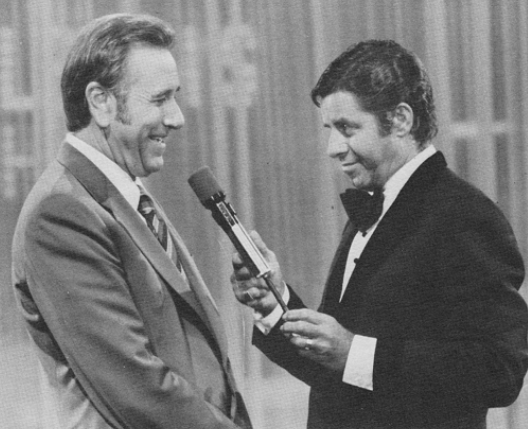
Aside from Jerry [Lewis] and [comedian] Jan [Murray], this is a very non-Jewish show. Jerry's kid-adult tug of war is also a contest between the Jew he is and the Christian he's becoming. So his office door in Century City bears a plaque that says "Super Jew." On the other hand, there is this blossoming relationship with Oral Roberts.Oral Roberts was the first nationally-telecast faith healer, and he used to lay on hands and transmit through them the healing power of the Lord. But Oral has now classed up his act considerably. The announcer on his weekly television show introduces him as "author-educator-evangelist Oral Roberts." And he's become the benefactor of a charity that supports medical science. Look, Lord -- no hands.
Last year Oral made his first appearance on the Telethon on behalf of Oral Roberts University, a major power in both spirit and basketball. Then Jerry and his wife Patti made an extremely rare joint appearance last spring on an hour-long prime-time Oral Roberts special. Jerry did parts of his nightclub act, leaving out the rash bit, and then he and Patti chatted with Oral about life.
Now Oral has brought his whole revue to Vegas: Richard and Patti Roberts, the World Action Singers and the Ron Huff Orchestra on a pre-recorded track, and the Grandfather Mountain, North Carolina, Cloggers. This act could headline at Knott's Berry Farm, it's that polished. Then Jerry introduces Roberts as "a true gentleman and one of God's chosen people," and Oral takes center stage.
"I said to the students at Oral Roberts University, 'Think of your love for crippled children. Think of your love for Jerry Lewis. Think of your love for God.'" Not bad. Second place -- behind the Deity, ahead of the kids. Oral gives Jerry a hefty check from the students at ORU. Som eof Lou Brown's musicians start whispering behind the curtain during the Oration. Jerry shushes them. "I pray," Oral finishes up, "that every friend and every partner of the Oral Roberts ministry will step to the phone right now. God bless you, Jerry."
As Oral strides purposefully out of the Space Center, Jerry tries to explain to the Jews watching what their boy has gotten into. "It gives you a strange kind of strength to know Oral Roberts. I think it's just because basically he's a nice man, and that's all we really want in life is to deal just with nice people." (A week after the Telethon, a Los Angeles station carries another prime-time Oral Roberts special, "Don't Park Here," directed by Jerry Lewis.)
That's just a tiny piece of a detailed and fascinating behind-the-scenes glimpse of the Jerry Lewis Telethon, and if you grew up in the '70s or love that era of American pop culture, you'll want to read the whole thing.
Shearer's story captures Oral Roberts at the peak of his period of mainstream respectability. ORU's campus was shiny and new. Sawdust and canvas had given way to slick TV specials that rivaled (and strongly resembled) the network variety shows of the day. Oral's kids were students at Holland Hall. He had left the Pentecostal Holiness movement, joined Boston Avenue Methodist Church, and was admitted to the ministry in the United Methodist denomination. In 1974, the ORU Titans narrowly lost the NCAA Midwest regional basketball finals to Kansas in overtime, and in the latter half of the decade, the team managed an eight-game winning streak against their crosstown rivals, the University of Tulsa Golden Hurricane -- a streak that wasn't broken until Nolan Richardson's arrival at TU for the '80-'81 season.
In 1976, Oral Roberts had not yet overreached himself with the creation of the City of Faith (that announcement would come in 1977) or ORU's law school (which opened in 1979), moves that would put him at odds with Tulsa establishment figures who were benefactors of Tulsa's existing hospitals and law school.
MORE: Here's a stock photo of Evelyn and Oral Roberts with Patti and Jerry Lewis on an Oral Roberts TV special called "We the People". Also in 1976, Oral Roberts filmed a TV special at the Singing on the Mountain gospel music convention at Grandfather Mountain, North Carolina, directed by Jerry Lewis and featuring Richard Roberts and the World Action Singers. Jerry Lewis participated in the tribute video played at Oral Roberts's memorial service.
Jerry Lewis's other Tulsa connection: His son, Gary Lewis, had a band called the Playboys. Pianist Leon Russell (from Tulsa) and guitarist and producer Tommy Allsup (from Collinsville) were session musicians on the group's first hit, "This Diamond Ring," and in later years Tulsans Carl Radle, Tommy Tripplehorn, and Jimmy Karstein were members of the band. (Those links go to photos on the Gary Lewis and the Playboys website.)
Tulsan Sarah Kobos has another insightful essay up at the Strong Towns website, illustrated with her own photos of lousy urban design right here in our hometown. While she's willing to forgive the urban design errors of the post-World War II decades, she politely asks cities to stop making them already:
Fine. We'll add the suburban development pattern to the long list of humanity's mistakes that occurred during the latter half of the 20th century. Like feathered bangs, the Ford Pinto, or any tattoo you got before the age of 35, sometimes we err, not because of malice, but from an understandable combination of ignorance and exuberance.The thing that really drives me crazy is the present. Now, we know better. We recognize the economic, human health, and environmental benefits of traditional building patterns. And yet, there is so much inertia built into the system, we just keep building car-centric crap like it was 1985.
While there are walkable sections of the city that benefitted from neglect when we were busy tearing down downtown and building suburban neighborhoods, they are now endangered by their own success:
In older parts of the city, walkable neighborhoods are being rediscovered and revitalized because they're interesting, human-scaled, and pleasant. People are drawn to them because they have character, and because it's nice to be able to walk to dinner or bike to meet friends for coffee. Understandably, the moment a particular neighborhood becomes popular--thanks to its historic buildings and traditional building pattern--it will attract new development. But if you're not prepared with zoning laws to enhance and support walkability, you'll get what everyone knows how to build, which is crap for cars.
If you've wondered why urban advocates are so concerned about demolition and redevelopment in downtown and midtown neighborhoods, Sarah offers a clear and simple explanation: It's easier to preserve walkability in neighborhoods that were optimized for people getting around on foot -- with smaller blocks and buildings oriented to the sidewalk -- than to try to create it in neighborhoods that were optimized for getting around in a car. Because of Tulsa's relatively young age, we never had that many walkable neighborhoods to begin with, and too many of those we had have fallen victim to urban renewal, expressway construction, and inappropriate infill development approved by our city officials.
That's why many of us have long believed we should follow in the footsteps of nearly all of our peer regional cities and institute special design-focused land-use rules in our walkable, historic commercial districts. Oklahoma City, Wichita, Little Rock, Dallas, Fort Worth, Kansas City all have design rules customized to protect walkable neighborhoods. Tulsa doesn't, in part because of the idea that chain stores and restaurants will insist on building their standard design everywhere. But anyone who has traveled around the country or around the world has seen examples of standard chains -- McDonald's, 7-Eleven, Walgreens, to name a few -- who have adapted designs to local requirements in order to have a store where there are customers they want to reach.
While our new zoning code allows for this kind of district, certain developers have fought against it tooth-and-nail, and we haven't seen any leadership in the right direction from any of our mayors. Instead, rules that were written for auto-oriented suburban commercial development govern these walkable commercial districts:
Since that time, we have gradually added requirements to our ordinances governing commercial lots: parking per square foot of building space; percent of landscaping area; maximum floor area ratios; building setbacks, prohibitions against residential uses, and many more. But every one of these requirements was created with car-oriented, suburban-style development in mind. The zoning code didn't support the old places built for people on foot, and in far too many cities, ordinances and zoning maps have still not been updated to protect these incredibly valuable assets.
While I've been pleased to see some street-oriented infill development along Cherry Street replacing auto-oriented development -- Roosevelt's (where the car wash used to be), Chipotle, CVS (replacing a convenience store) -- the requirement for a ridiculously large minimum number of parking spaces has required the removal of many homes and small apartment buildings, reducing the number of people who can live affordably within walking distance of all these amenities. The massive parking lots reduce the area's density, which also reduces its economic productivity. Generally speaking, the higher the population density (up to a point far more dense than Tulsa will ever be), the less you have to spend on infrastructure to serve a given population.
I've been hoping for some leadership at City Hall on this issue for many years, but I've long since given up holding my breath. I appreciate the efforts of Tulsans like Sarah Kobos to educate citizens with vivid examples and lively language. Maybe, someday, we'll reach critical mass and see things change.
MORE: A collection of links to past BatesLine articles on zoning generally and in support of overlay districts such as neighborhood conservation districts, urban conservation districts, and historic preservation districts.
It's a paradox: The Tulsa Drillers, our city's minor league baseball team, appear to be in the best financial shape they've ever been and setting attendance records every year. But when I've attended games in recent years, I've been surprised at the large numbers of empty seats.
Below is a draft of an article I wrote on June 23, 2013, after a visit to the ONEOK Field with my son. I've been back to the park on a number of occasions since then, and my observations stand. Last August, my son and I attended four games during the season's final stretch, during which we observed the large number of empty seats, which suggested an actual attendance -- "butts in seats" -- far below paid attendance, which would include season tickets, whether used or not. The photos below, from that June 2013 game, show far more actual attendees than I've seen at more recent games. I should mention that we haven't been to a game this year, simply because we've been otherwise occupied this summer, but we'll probably try to make a game or two before the season is over.
Today, while running errands, I listened to Jessica Dyer's "Down to Business" show on KRMG, and her guest was Jason George, Executive Vice President of the Tulsa Drillers. It was interesting to hear him talk about the shift in the club's business philosophy with the move from Driller Stadium to ONEOK Field. Although the new park has half the capacity of the old one, the team has more than doubled the size of its permanent staff and increased its seasonal staff as well.
George talked about the decision to end the tradition of Pack-the-Park Night, when free tickets were distributed through QuikTrip, Arby's, and other local sponsors, typically for poorly attended midweek games. Our habit was to pay a few bucks extra per ticket to upgrade those free general admission coupons for reserved or box seats. The full house added to the excitement of being there for the game, and I suspect concession sales went through the roof. The lines were certainly long.
I phoned in with a question, which I relayed to the producer. They had me speak to George off the air, during a commercial break. My question: What could be done to allow people who actually show up to the game to buy good seats? George told me that they couldn't resell a seat that belonged to a season ticket holder. He mentioned that there was a higher retention rate among season ticket holders than at the old park.
George's answers on and off the air, along with my in-person observations, have convinced me that the downtown version of the Tulsa Drillers are no longer about baseball fans watching future major league stars. They are about selling corporate suites and club seats to companies -- selling the skyline as a backdrop to business meetings, and oh, by the way, there are some people playing sportsball on the grassy courtyard nearby.
Most of what I wrote four years ago still holds up, except that, of course, the old park can no longer be a venue for a baseball-fan-focused alternative, thanks to the city's foolish designation of the site for the BMX headquarters before the logistics (e.g., conflicts over "pouring rights") had been ironed out. It's a shame that a beautiful ballpark, ideal for watching the game, built and improved entirely with private funds, is being dismantled in favor of a downtown park funded through taxes and misoriented for baseball.
Tulsa's ONEOK Field is a great place to hang out on a summer evening, people-watch, let your kids splash and climb, and (if you're lucky enough to have infield seats) enjoy the view of the downtown skyline as the sun sets. But as a place to watch a baseball game, it's not nearly as good as the Tulsa Drillers' old ballpark at 15th and Yale.
Friday night I took my seven-year-old son downtown to join my daughter and the church youth group watching the Tulsa Drillers against the Northwest Arkansas Naturals at ONEOK Field.
The youth group had planned to sit on the outfield lawn, but I was considering paying extra for infield seats for me and the boy, so that we could see the state of the game more clearly. When we got to the box office, that wasn't an option. Only the $5 outfield lawn seats were available, and already they were filling up.
That wasn't because the infield seats were full. It looked like at least a third, maybe even half, of the 5,000 seats in the infield were unoccupied throughout the game. Presumably these seats belonged to season ticket holders who opted not to attend that night. I have heard that there are companies that buy season tickets as a business expense for entertaining clients and as a perk for their employees; if they're not needed for that purpose on a particular night, and no employee wants them, the seats go empty.
This was the first game I'd watched at ONEOK Field from the outfield lawn. For other games, I'd had infield tickets from a friend -- second row back from home plate in one case, club seating at other times. (Those seats had a great view of home, but during day games they put you right in the sun. We abandoned the second-row back seats after a few innings, preferring to watch from the shade of the concourse.)
From the outfield lawn, you're 400 feet from home plate. You're scarcely above the level of the players, so you're getting a vertically compressed, cross-section view of the game -- outfielders, infielders, pitcher, catcher, batter, umpire, runners, coaches are all on the same level. The batter, catcher, and home plate umpire seem to blend in to the crowd in the seats behind them. In most stadiums, when you look in from the outfield -- the typical TV camera angle -- you see a wall behind the batter, giving you a fairly clear view.. At ONEOK Field, there are fans sitting at tables right at ground level behind the batter.
From the east half of the right field lawn, you can't see the jumbo scoreboard because of the playground and towering batter's eye screen that protects the kids' splash pad. We could see the numbers on the small scoreboard over the 1st base seats, but it took a while to make out the lettering and figure out which number was which.
Back in 1987, when friends and I went made three trips to old Busch Stadium and had upper-deck outfield seats to watch the St. Louis Cardinals, we would joke that the action on the diamond was so far away that "the game was only a rumor." But at least from that vantage point we could see the movement of the runners and fielders and have an idea of what was happening. Down on the ONEOK Field lawn, we didn't have that consolation.
At the old Drillers Stadium, there really wasn't a bad seat, although that wasn't the case from the beginning. When the first outfield seating was built along the left field foul line, the seats were oriented perpendicular to the foul line, so you had to sit at a sharp angle to the bench to see home. The closest seats to the field were at least 10 feet up. Owner Went Hubbard reoriented the left field seating and built right field seating angled to face the infield. He also dropped the box seats from their lofty perch to a more reasonable height above the field. The orientation of the park allowed the shadows to begin to shade the stands early in the evening. The results were great for watching baseball.
The downtown stadium backers said our old ballpark was too big at 10,950 seats. We needed a smaller, more intimate stadium so that it would feel full most of the time, they said. But how intimate can it feel when half of the seats are empty?
The Drillers should consider some measures that protect season ticket holders, but at the same time fill up the infield seats whenever possible (and as a bonus, make more money).
Since barcode scanners are used to scan every ticket each game, somewhere there's a computer that knows exactly which seats have already been claimed that game. That makes it possible to fill the infield stands without chaos.
The Drillers could offer season ticket holders a credit for notifying the Drillers and releasing their seats when they won't be used. Go to the website or the mobile app, click a button, and the Drillers can credit your account and resell the seat to someone who will actually use it that night.
The Drillers could offer seating upgrades after the third inning; ticket holders in the park could pay to upgrade to any unclaimed seat. Season ticket holders who are running late could notify the Drillers via the web or a mobile app not to release their seats.
As an alternative, maybe someone could bring an independent minor league team to play at the old park. The American Association of Independent Professional Baseball has teams in a number of old Texas League ballparks, including Wichita, Amarillo, and El Paso. A few of the teams manage to thrive playing just a few miles from a major league park -- the St. Paul Saints, the Kansas City T-Bones, and the Grand Prairie AirHogs (their home field, QuikTrip Park, is just seven miles from The Ballpark in Arlington). These teams draw fans who want to see baseball up close at an affordable price. QuikTrip Park, by the way, cost $20 million to build in 2008, and seats about 5500.
